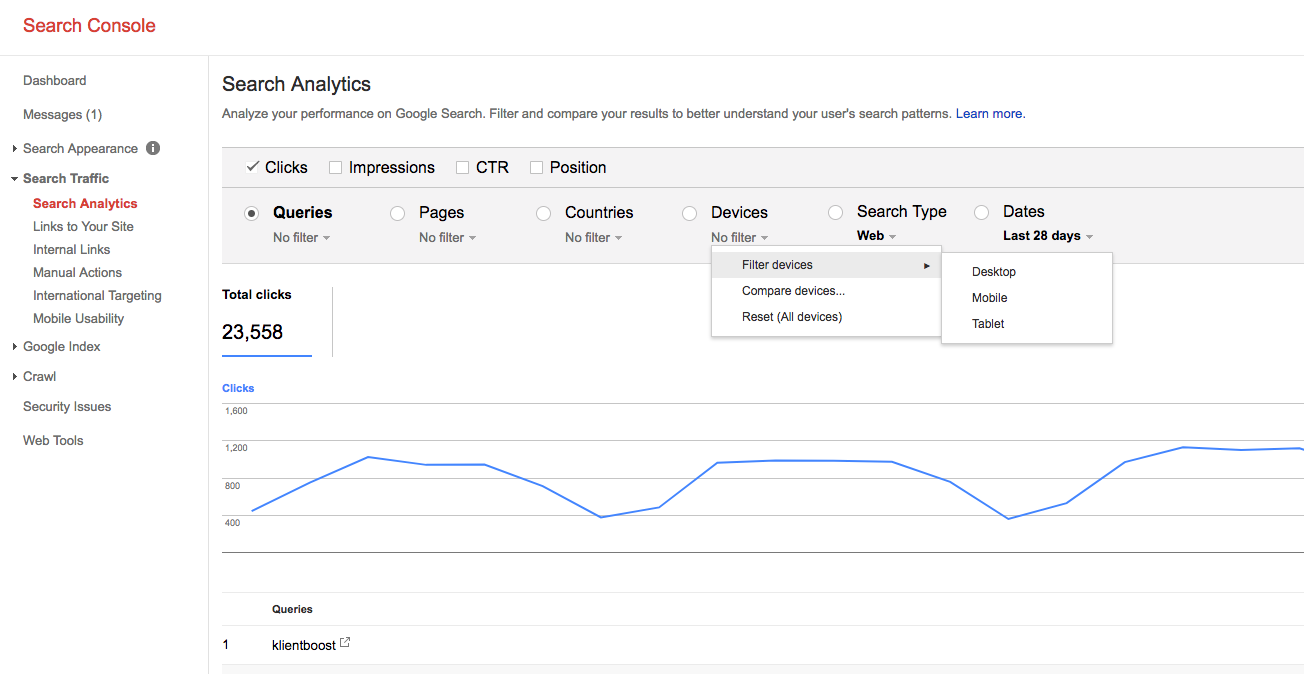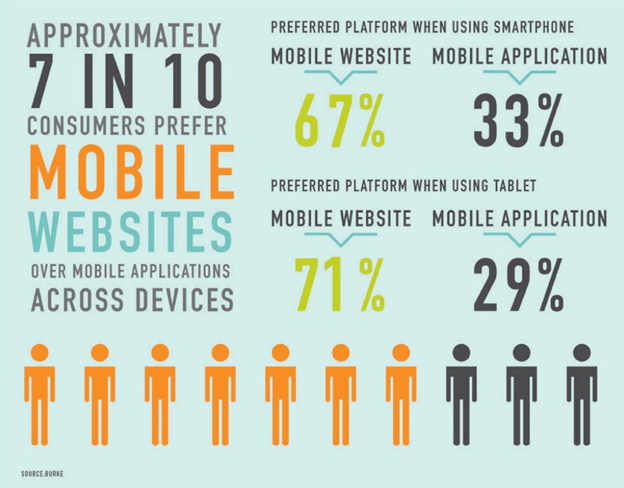Why should you consider AdWords mobile campaigns? Mobile optimization has been around for over a decade now--ever since phones began to have the ability (however crudely) to read webpages. Comscore found that 70% of users “digital media time” is spent on mobile devices. Comscore also found that mobile ads are now more effective than desktop ads, “up and down the funnel.”
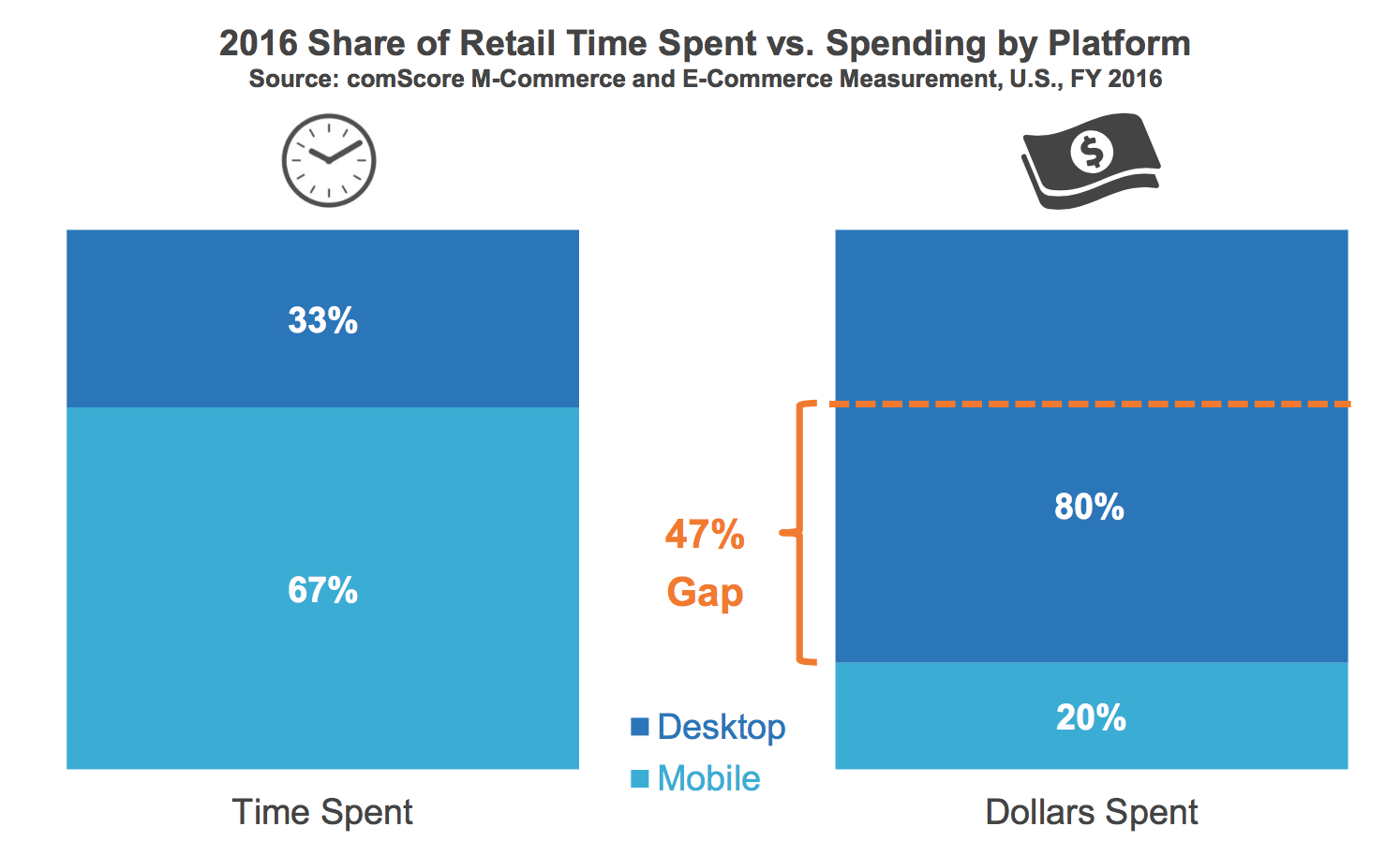
Until recently, most entrepreneurs, marketers, and small business owners avoided running mobile-centric AdWords campaigns, preferring to let their traditional PPC campaigns do all of the work--and for good reason.
A little bit of history...
In 2014, (Remember 2014? Ah, the good old days.) Google decided that it didn’t want to allow advertisers to target their campaigns by viewing device. Some enterprising advertisers tried to get around the system by “modifying their campaign structures and bidding strategies,” but most preferred to let one campaign do the work.
Trying to game the system was just too complicated. And ate up tons of time. And did I mention complicated?

Thankfully, Google quickly got hip to the fact that their mobile PPC system needed to be changed and now, creating an AdWords mobile campaign is easier than ever.
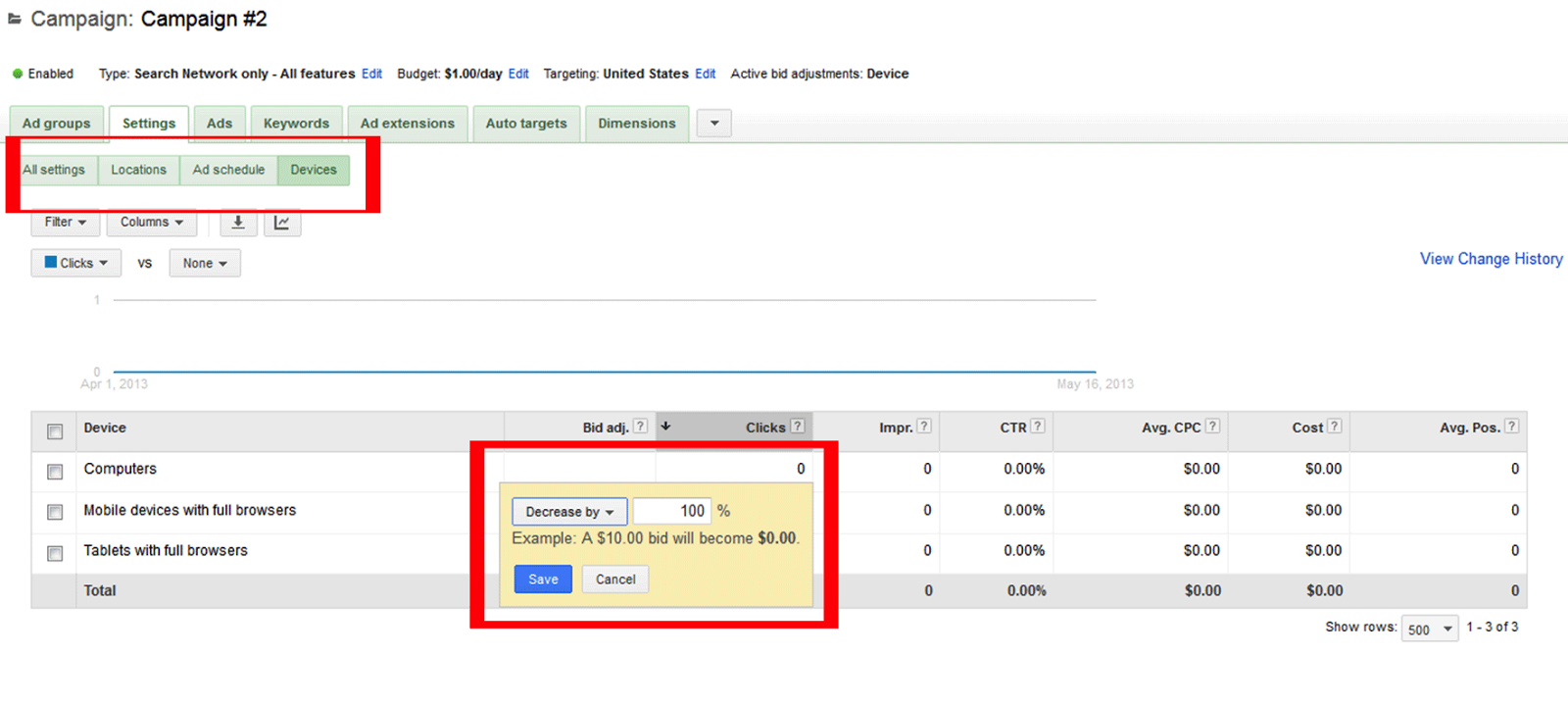
You know that saying about striking while the iron’s hot? And facing your fears? And peeing into the wind? Okay, maybe that last one isn’t the best metaphor.
Get brand new Google ad strategies straight to your inbox every week. 23,739 people already are!
Examples of Success with Mobile Ads
So, with all this talk, it would be nice if we had some proof to show companies having success with mobile ads, right? Lucky for you, we have some...
Case Study: Shutterfly
Shutterfly is a company that specializes in personalized products. They are the people you hire to put your face on mugs, shirts, turn your photos into holiday cards and announcements, etc. They decided to track their conversions across devices and, for part of their study, they put all of their eggs into the AdWords mobile basket.
The result? 60% increase in mobile conversions for searches incorporating non-brand terms.
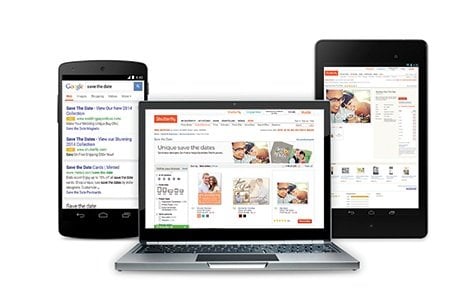
Case Study: Caserola
Caserola is to Bucharest what GrubHub is to Portland. Before they reconfigured their AdWords campaigns to, specifically, target mobile users, their mobile CTR was a measly 15% (the industry standard at the time was around 30%). After their campaign reconfiguration, about half of their clicks come from their mobile campaigns.
Overall? Caserola’s mobile conversion rate has grown by 300%.
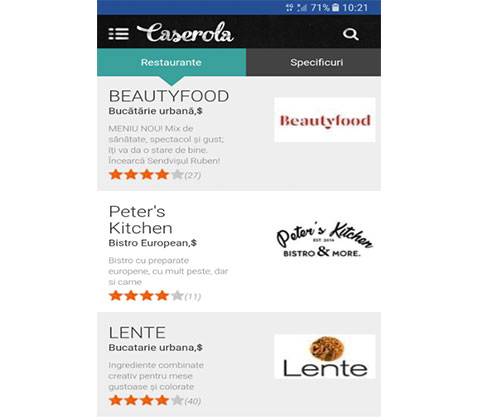
Case Study: Event Tickets Center
Event Tickets Center sells aquariums. Just kidding. Though, they can sell you tickets to an aquarium.
As a ticketing outlet based 100% online, Event Tickets Center decided to pair the AdWords mobile capability with Google’s AMP. Their clicks with traditional PPC campaigns had been reasonable, especially once AMP was implemented to it’s full functionality.
But what about when they focused their campaigns on their mobile users? They saw a 100% increase over mobile ads that pointed to simple responsive sites.
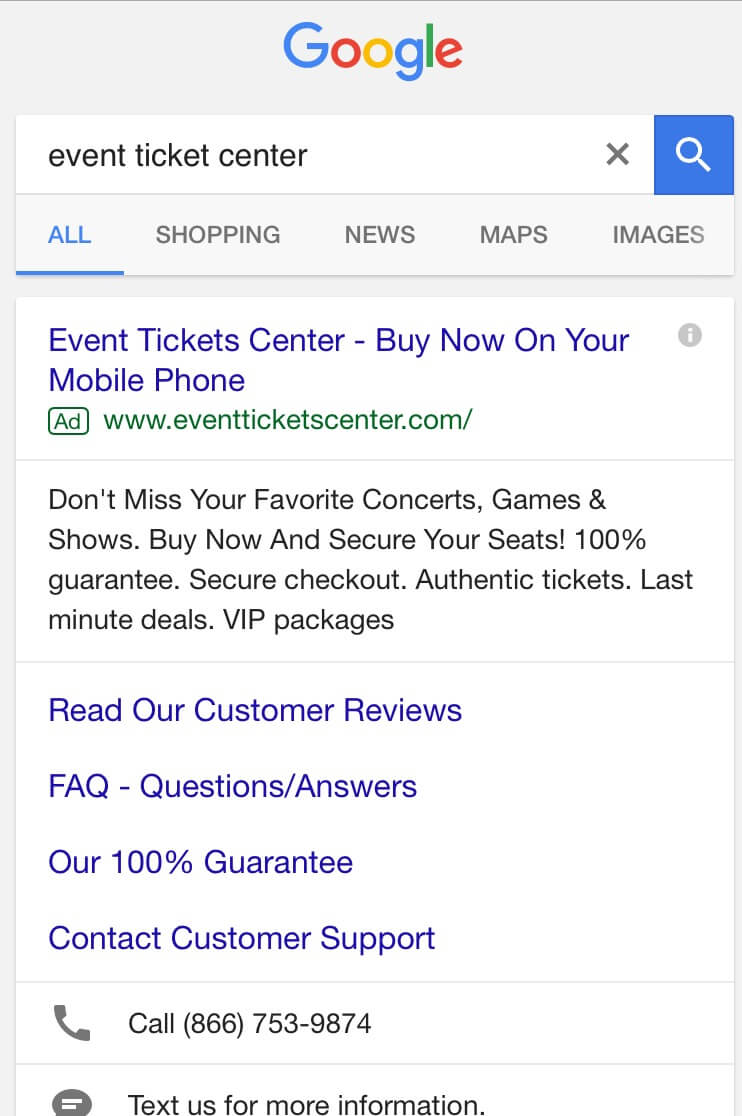
Case Study: Vegis
Vegis is a Romanian online retailer that specializes in natural products, food supplements, kitchen supplies, and even medical devices. Natural products is a competitive market no matter where your company or its customers are located.
In order to set themselves apart from their many competitors, Vegis decided to focus its efforts on selling directly to mobile users. They saw a 146% increase in mobile conversions and 101% of their conversion increase was the result of their AdWords mobile campaigns.
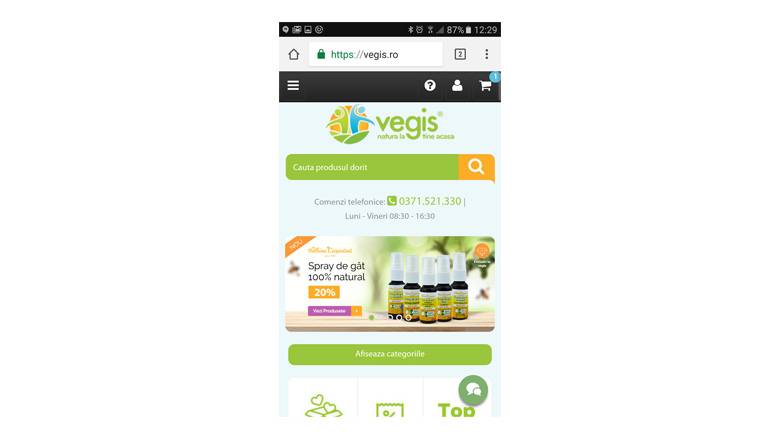
More Fun Statistics
While a lot of buzz has been built around Facebook’s advertising system, Google is still the most popular choice among marketers. 42.2% of the Ad Market will be spent with Google this year, while Facebook doesn’t quite reach 30%.

During Q4 2015, mobile ads accounted for about half of the paid search clicks on both Thanksgiving and Black Friday.
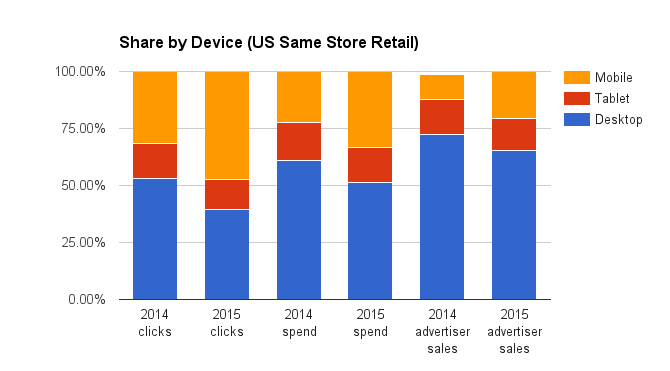
Business Insider predicts that within the next three years mobile commerce will grow to make up 45% of all ecommerce
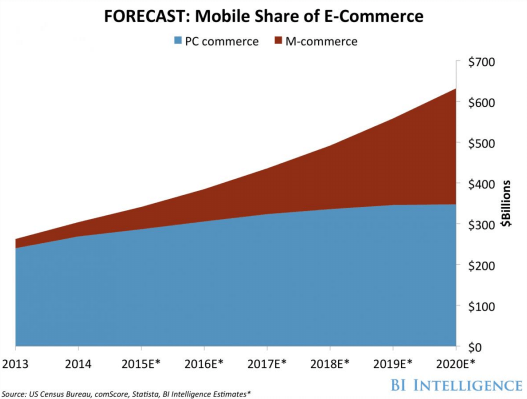
While researchers have started to increase their creativity when it comes to starting points, the search engine still reigns supreme. 48% of searches begin on a search engine regardless of subject matter.
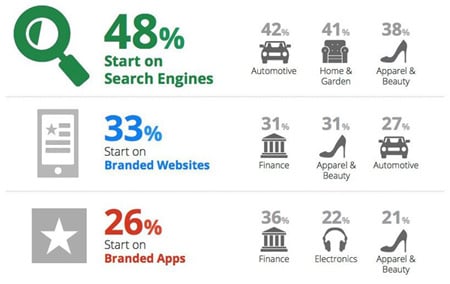
Local searches keep growing in popularity, particularly among mobile users. In fact, local searches are growing at a 50% faster rate than mobile search as a whole.
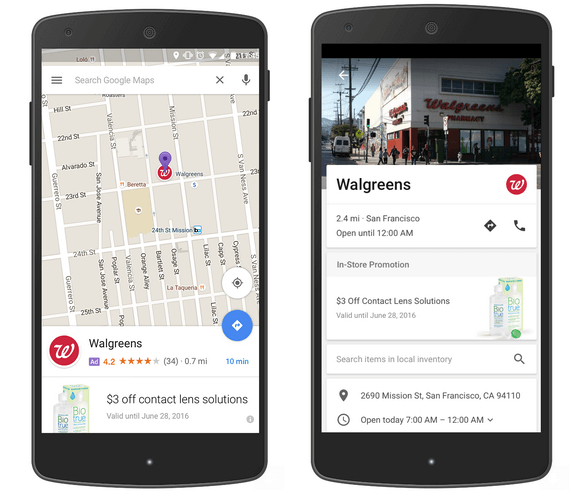
Mobile searches result in purchases more often than not. According to the Mobile Ecosystem Forum, 78% of those surveyed in their annual money report reported that they used their devices to make a purchase in 2016.
36% of those mobile-based purchases were for a physical product, while food and drinks made up 26%.
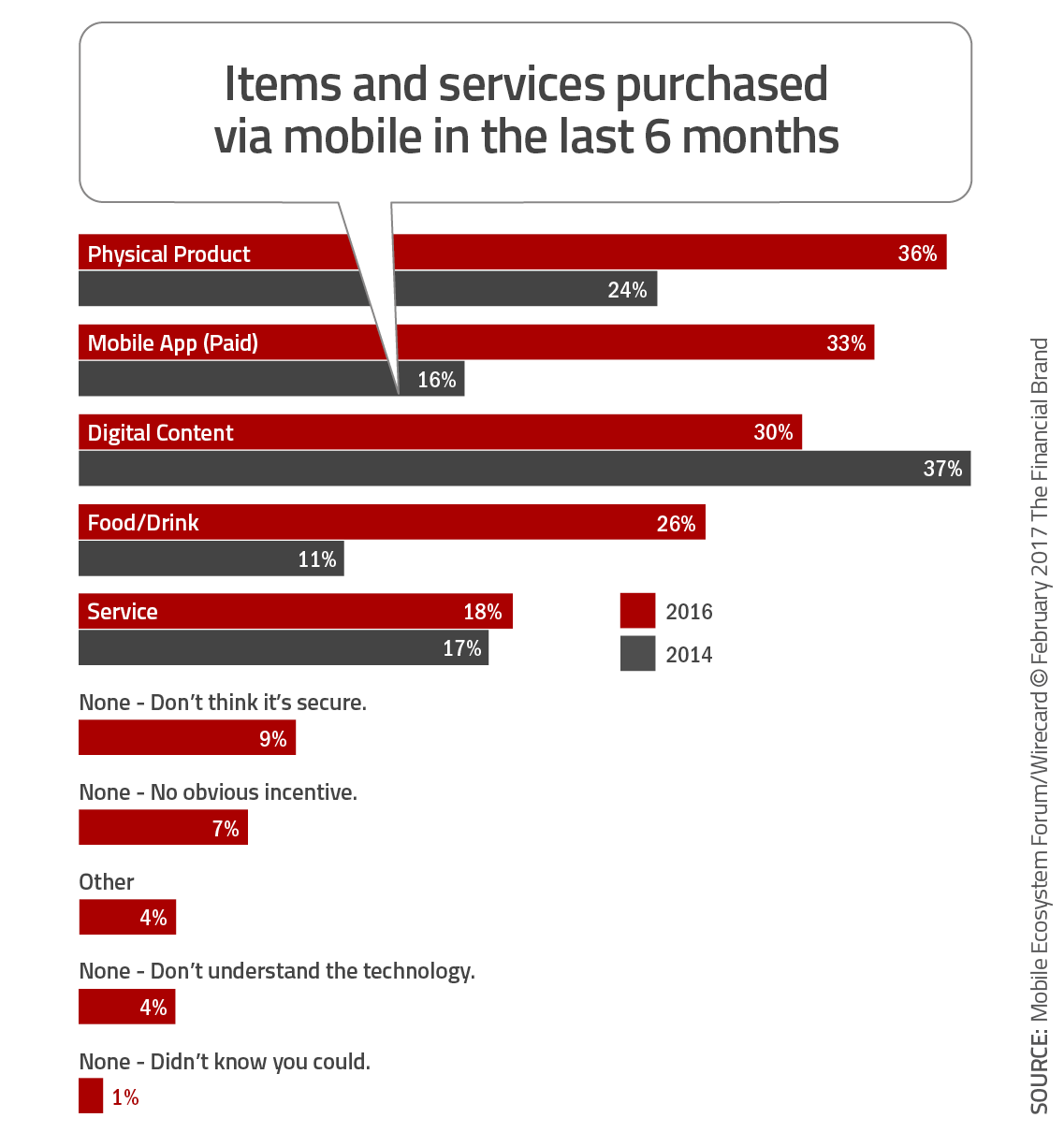
So, how do you take proper advantage of this growth? Well, first, it would be good to know if there are any special considerations for mobile ad setup that you might not know of already.
Mobile vs. Desktop Campaigns: Is There a Difference?
Is there really a difference between how to setup mobile and desktop campaigns? The structure definitely has some similarities (i.e., you have campaigns, ad groups, keywords). You’ll likely notice, however, that ads perform differently on desktops than they do on mobile devices. It just makes sense, then, that you’ll want to optimize for what’s performing best with those specific users.
Earlier this year, Mary Meeker created a massive report (355 slides) on current shifts taking place in the digital and web-based economies. While researching the report, Meeker found that mobile advertising was outpacing standard advertising. Though standard advertising maintained the relatively the same average year after year, mobile advertising was seeing a 22% increase each year in its popularity.
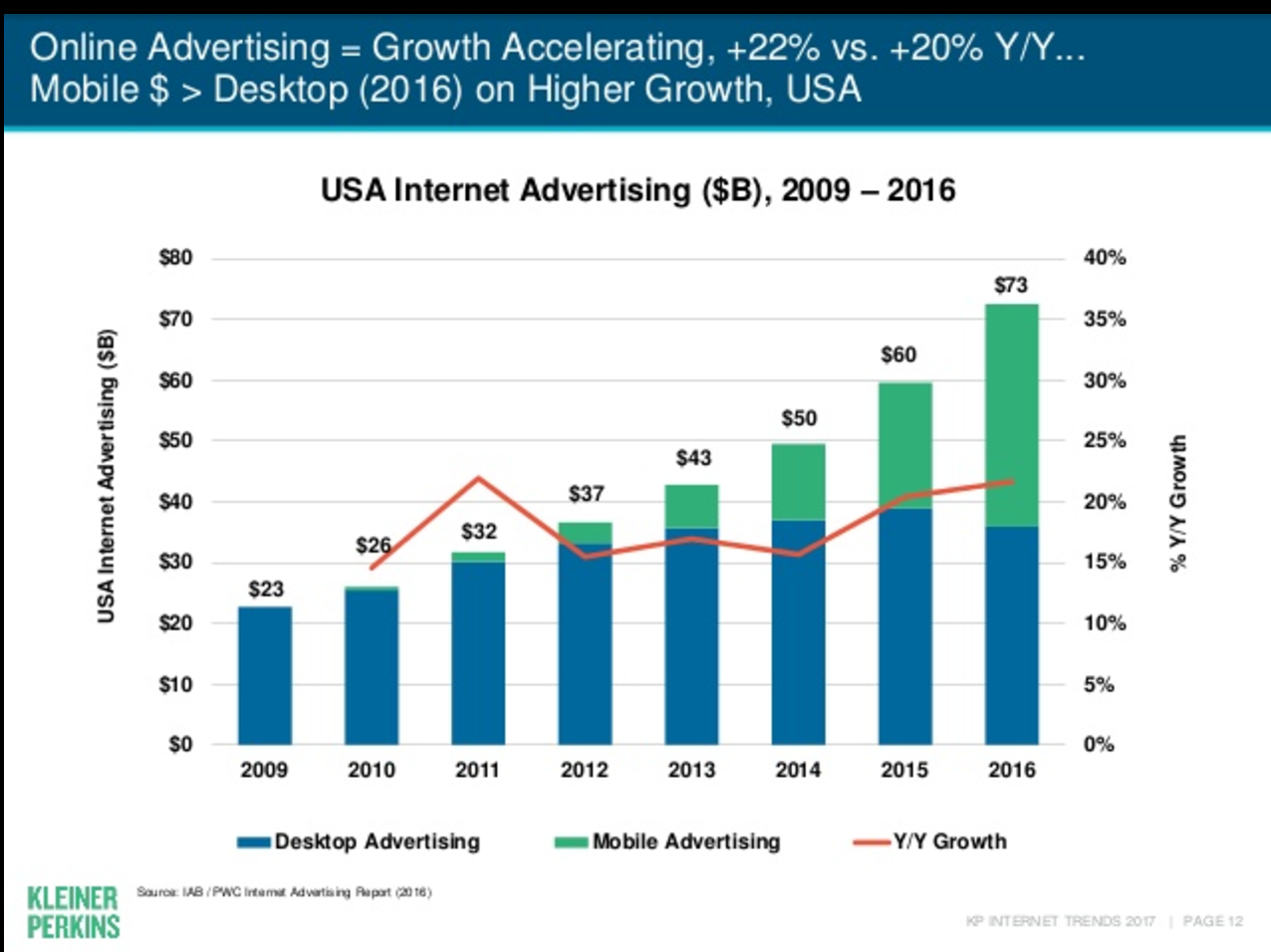
It’s safe to say that the future of advertising, even PPC, is mobile based for a lot of brands. Though please remember that every business is different. For instance, KlientBoost still sees a good amount of traffic coming from desktop. That being said, when if you do set up your mobile campaigns, as mentioned, you should take care to optimize your mobile ads for mobile users.
Best Practices: Optimizing for Mobile Searchers
So, what do I mean when I say “optimize for mobile users”? Like with standard PPC campaigns, you need great keywords and an AdWords group-based structure. When optimizing your campaigns for AdWords mobile, though, there are a couple of criteria that will need some special attention.
Keyword and Copy Choices
Let’s talk a little bit about what you should include in your mobile ads and how to appropriately target with the right keywords.
Timely and Actionable Focus
You may know the basics when it comes to keyword selection for PPC purposes (for desktop campaigns, anyway). When you’re building mobile campaigns, however, you need to think about speed.
People who are searching for stuff on mobile are, more often than not, looking for something that will work for them right now. Think I’m exaggerating?
Here’s what Google had to say about it:
”Their [the user’s] research starts with a search engine (vs. a mobile site or app), proximity is important (69% expect businesses to be within five miles of their location), immediacy is key (more than half want to purchase within the hour) and mobile influences their purchase decisions (93% go on to buy).”
This means that your keywords need to be precise and action-based. Leave the descriptors to your desktop campaigns. Mobile devices have smaller screens and people aren’t going to want to scroll for days -- something to keep in mind for landing pages your ads link to as well.
Voice Search for Mobile Users
Another important criteria to consider is how mobile users are searching. Mobile users are searching by speaking to their devices instead of typing on them, often by way of a digital assistant like Siri, Cortana, etc.
By June of last year, Google was reporting that a fifth of their mobile searches were done using voice search. More importantly, their speech recognition error rate is only 8%.

What does that mean for your keyword groups? It means that you should build at least some of your mobile groups to cater to the way voice search and digital assistants parse conversational human speech.
Digital assistant and voice search AI is coded to take the longer phrases we use conversationally and in the questions we ask out loud, and distill that query down into its most important keywords.
To use the AMA’s example:
“A query like ‘Broadway plays Wednesday afternoon’ can become ‘What plays are playing on Broadway Wednesday afternoon?’ Search engines typically search for the keywords ‘Broadway,’ ‘Wednesday,’ and “afternoon,’...”
This means that, in order to properly target mobile users, you need to set up your ad groups to better target those specific queries that voice search is pulling in. And, because voice search works best with conversational language, these queries aren’t going to follow standard desktop PPC query or phrasing trends.
SelectingBest Keywords for Voice Searchers
In order to figure out which keywords and phrases you should target, you’re going to have to do some research and some testing. That’s right, it’s time to do some digging into your Search Query Reports.
And you’re not just limited to what AdWords provides. You can find Search Analytics in the Google Search Console. Yes, most of the time it is used for SEO. Still, it can help you brainstorm ideas for keywords.
Sure, you’ll see the results from organic link clicks instead of an ad, but these visitors are still finding you via the Search Network. They’re interested in what you’re offering.
Although you can filter by mobile device in AdWords or Search Console, it’s not as easy to see which queries come from voice and which come from typing.
One might say, in the end, it doesn’t really matter, because you just care what the top queries are for the device, regardless of input method.
Still, when you’re catering to mobile voice searchers, those words and phrases you find are not created equal. The process is going to be slightly different than the one you use for standard campaigns.
Because voice searchers search conversationally, the queries used are more likely to be longer and fully thought out questions, whether or not Siri picks up all the words. One of my favorite tips for finding where these queries come from is noted by Purna Virji. According to Virji, a good rule of thumb when analyzing your SQRs is to look for queries that are at least five words long.
Why? Because, though there isn’t yet a way to break down search queries into “voice search” vs. “typed”, we do have data to rely on. The data reported by both Google and Microsoft says that the average voice search is 4.2 words while text is 3.2 words. So, if we aim for five, we’re more likely to be sure that the query is vocal.
PRO TIP: Download your SQR into Excel and use Excel’s search functionality to make this part easier and faster.
Once you’ve found your conversational queries divide them by category into their basic questions. Yes, Virginia, it turns out those five Ws (and one H) you learned in grade school are relevant now that you’re all grown up.
Here’s a chart that Purna Virji created using the keyword “buy a bicycle”:

When you know which questions people are asking, you can figure out and sort them by their intent. Then, you can tailor various ads for specific intents of your visitors.
Finally, organize these questions by their ranking within your Search Console and SQR. Build your voice search group the same way you would a group targeting typists: by using the highest ranking queries in your report.
Ad Extensions Are YourFriends
Ad extensions are tools that incorporate extra functionality into PPC ads. For example, when optimizing for mobile, instead of simply including your phone number, you can add a “call now” extension to the ad. This way, when someone clicks on that button, their phone will automatically call the number listed.
As far back as 2013, Google reported 70% of mobile searchers would call companies directly from their search results. Google also estimates that people who incorporate ad extensions see a 10-15% improvement in their CTR.

Optimizing for Mobile: Call Only Just Got Better
If you want to take that “call now” extension idea one step further, AdWords has you covered with what they call “call only” ads.
Most AdWords ads will send the searcher to your website when clicked. When ad extensions are employed, they have the option of calling you or visiting your site. With call only ads, however, a click tells the mobile device to call you directly.

The downside of call only ads is that they can only be served to people who are using calling enabled devices to search.
The upside, however, is that you’ll be tapping into an audience already primed to call you. The extra upside is that Google has finally started allowing call only ads to use extensions which will make your ads even more likely to convert.
Dayparting
Technically, “dayparting” is a practice used primarily by broadcast outlets. It’s how radio and television stations divvy up their days. For example, “drive time” is one type of day part. “Prime time” is one common in television.
You get the idea.
You can use dayparting for your mobile ads, too. Google allows advertisers to schedule their ads for specific dates and times. Take advantage of this. You can see in the graph below that volume of search during a particular time of day may be different for desktop vs mobile. Adjust accordingly for campaigns meant for an AdWords mobile audience.
Remember, most mobile searchers are looking for a solution right now, so schedule your restaurant’s lunch menu ads at lunch time, your “make a reservation” ads in the afternoon, etc.
To do this well, it’s a good idea to spend some time tracking your keywords and see when they get the most traffic. Here’s an example Google provides based on the keywords “baby products.”
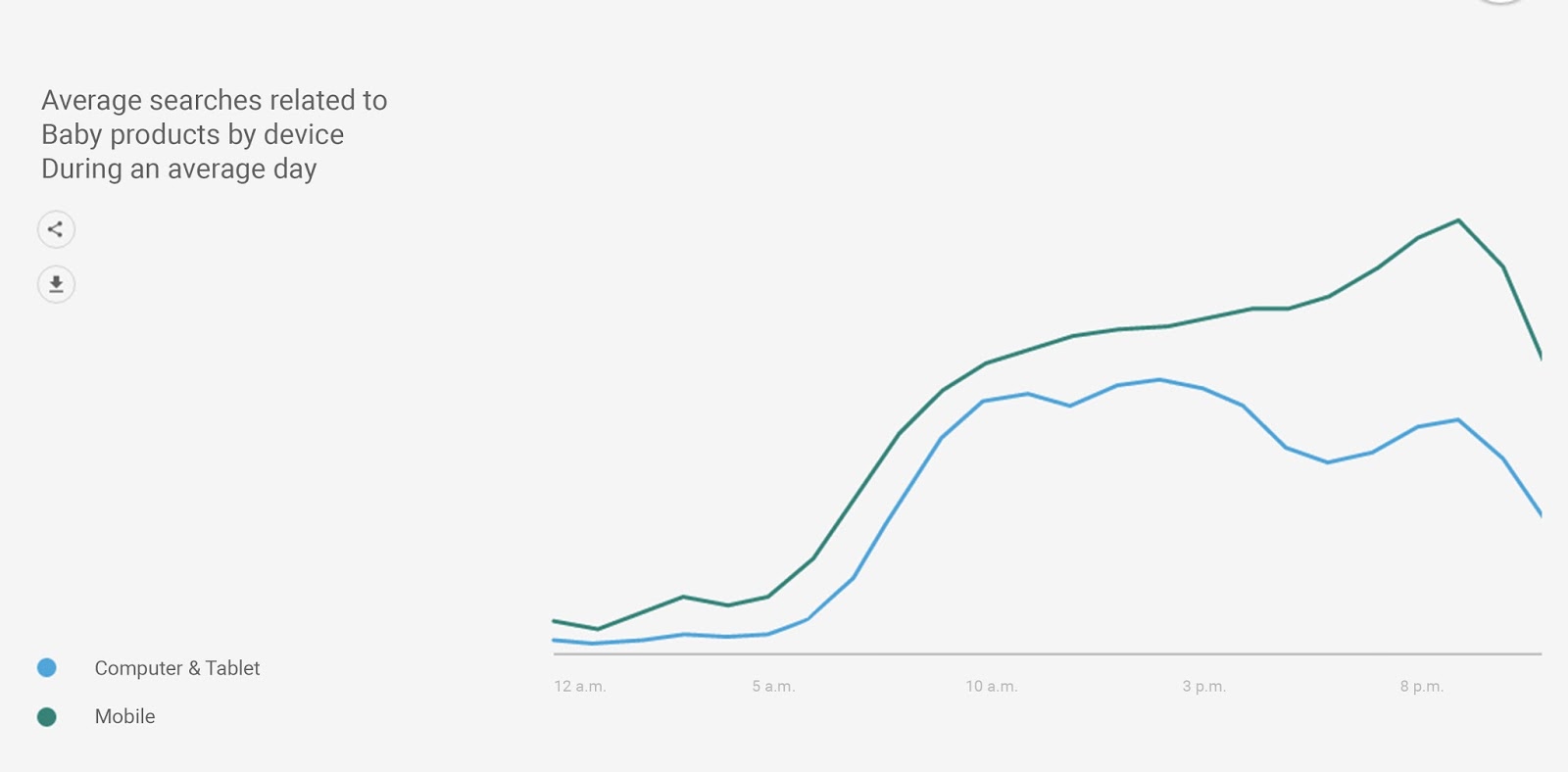
This data was reported in Search Engine Journal by Andrew Lolk. He goes into detail about it in the interview but here’s the gist: when you know which times of day cost the least and which times of day are more likely to result in a sale, you can increase the likelihood that your campaigns will be profitable.
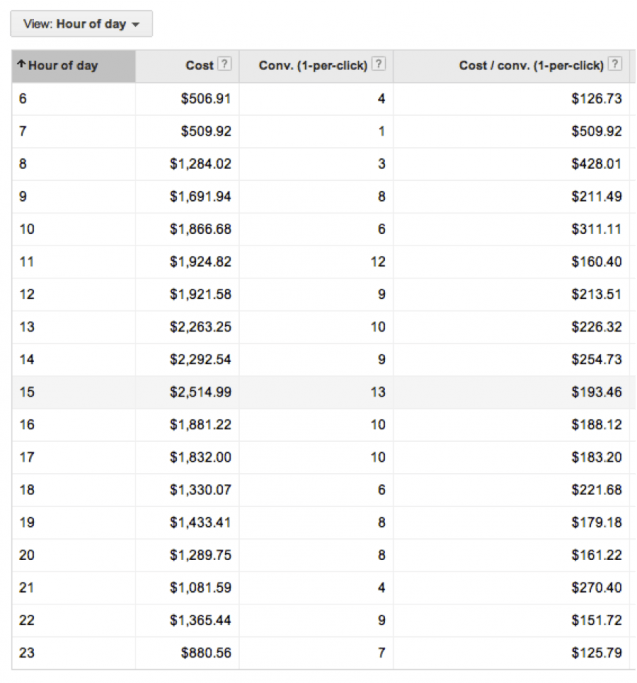
It’s important to do your research before you try to adjust your bids on your own. Make sure you have good analytics data on which to base your bidding decisions.
The Right Destination
You’d think that this could go without saying, but you would be surprised. Ready? Here you go: make sure that your mobile ads send traffic to a responsive or mobile-optimized site.
Remember, mobile optimization is important. It improves your CTR. It improves your conversions.
It also improves your AdWords Quality Score.
The last thing someone on a smartphone (no matter how danged big those screens get) wants to do is have to zoom in and out and move your page around their screens to find the “buy now” or “learn more” buttons.
Thankfully, most site builders these days have built in code or easily plugged in widgets that will properly size and optimize your site for whatever screen will display it. If you haven’t gotten around to this, though--seriously? What’s the hold up?
Wrap Up on AdWords Mobile
Stop trying to brute force your AdWords and PPC campaigns to be everything to everybody. Build them based on who your audience is and which devices they’re using to find you. You’ll save money, sell more stuff, and, well…

What say you, intrepid entrepreneurs and marketers? Did I miss anything? Do you have any questions, specifically, about the differences between AdWords mobile vs desktop campaigns?
Leave a comment and let me know what you’re thinking. I’d love to hear from you.

